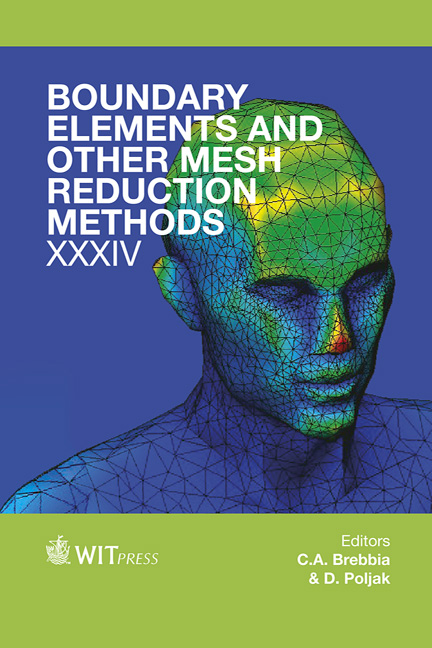Dispersion Analysis Of The Meshless Local Boundary Integral Equation (LBIE) Method For The Helmholtz Equation
Price
Free (open access)
Transaction
Volume
53
Pages
11
Page Range
259 - 269
Published
2012
Size
390 kb
Paper DOI
10.2495/BE120231
Copyright
WIT Press
Author(s)
H. Dogan & V. Popov
Abstract
Numerical solutions of the Helmholtz equation suffer from numerical pollution especially for the case of high wavenumbers. The major component of the numerical pollution is, as has been reported in the literature, the dispersion error which is defined as the phase difference between the numerical and the exact wave. The dispersion error for the meshless methods can be a priori determined at an interior source node assuming that the potential field obeys a harmonic evolution of the numerical wavenumber. In this work the meshless local boundary integral equation (LBIE) in 2D is investigated with respect to the dispersion effect. Radial basis functions, with second order polynomials and frequency dependent polynomial basis vectors, are used for the interpolation of the potential field. The results have been found to be of comparable accuracy with other meshless approaches. Keywords: meshless methods, dispersion, local boundary integral equation, radial basis functions, Helmholtz equation. 1 Introduction Accurate solution of the Helmholtz equation is of importance for many applications in acoustics such as ultrasonics, microfluidics, aeroacoustics, etc. The simulations involving the high frequency oscillations and large scale industrial setups get cumbersome to solve due to immense computational storage and time requirements. It is well known that numerical solutions of the Helmholtz equation encounter the pollution affect especially for high wavenumbers. The major component of the numerical pollution is the dispersion error which is defined as the relative
Keywords
meshless methods, dispersion, local boundary integral equation, radial basis functions, Helmholtz equation.





